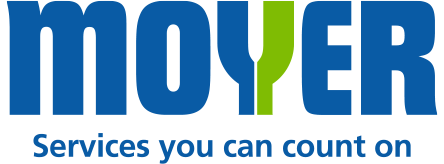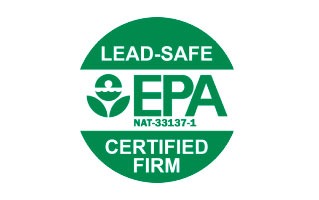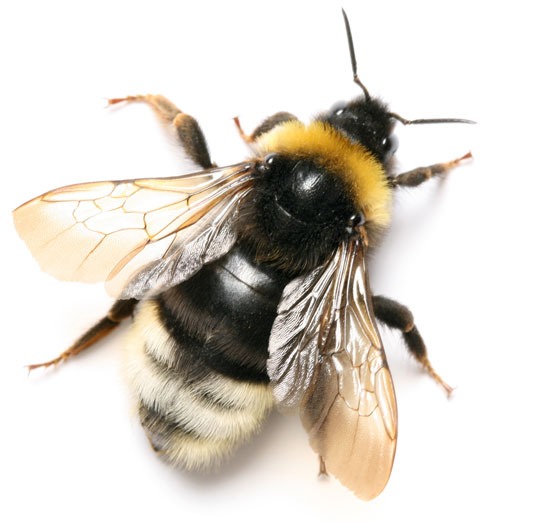
Bees are a key contributor to the earth’s ecosystems. Of the approximately 25,000 bee species in the world most of them are pollinators. Their work ensures the continued growth of fruits, vegetables and grains that the rest of the inhabitants of the planet rely on for food. While less than 5% of bees produce honey, it is widely enjoyed as food by humans, animals and birds and is also useful for its wound-healing properties.
Over the last several decades, bee populations have been in decline. This has been attributed to a combination of conditions and events including parasites, diseases and loss of habitats.
Both bees and wasps belong to the insect order Hymenoptera, and the many species are often confused for the other. There are distinctions between the two, starting with appearance. Bees will appear plumper and fuzzier than wasps, whose bodies are thinner and smooth. They also differ in their stinging capabilities. Of the bees that do sting, they can only sting one time and then they die. Wasps are able to sting multiple times.
While their appearance can vary across the many species, all bee bodies have three segments: head, thorax and abdomen. Pollinating female bees will have pollen pouches on their hind legs that they use to carry pollen back to their hives.
The United States is home to 4,000 bee species, with 437 of these species found in Pennsylvania.
Types of Bees in Pennsylvania, New Jersey and Delaware
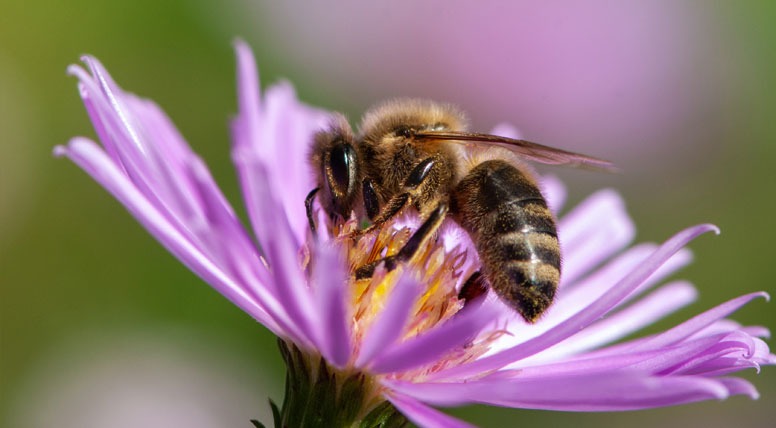
European Honey Bee (Western Honey Bee)
(Apis mellifera)
The European Honey Bee (also known as the Western Honey Bee) is not native to the United States. As its name suggests, it traveled to the United States with the arrival of the first settlers from Europe. These bees have slender bodies with black and orange-yellow stripes around their abdomen. They live in colonies of thousands of honey bees with each type of bee having a role. Each colony has one queen, male drones and female workers. The queen is responsible for reproduction and the main mission of a drone is to mate with the queen. The workers take care of all of the responsibilities of managing the hive, except for reproduction. There are approximately 100 workers to one drone. The female worker is the only honey bee that will sting and usually only when provoked.

Eastern Bumble Bee
(Bombus impatiens)
There are 14 species of bumble bee in Pennsylvania. The Eastern bumble bee is the most common and most easily identified, with round, fuzzy black and yellow striped bodies. They are social bees that live in small colonies nested in the ground. Their colonies have an average of 100-200 workers. The bumble bee queen is just under one inch long, with workers (females) and drones (males) growing to about ½-inch long. These efficient pollinators are sometimes confused with carpenter bees. The main difference is that the Eastern bumble bee’s body is covered in short fuzz and carpenter bees have a smooth abdomen. The workers will sting when threatened and are able to sting multiple times.
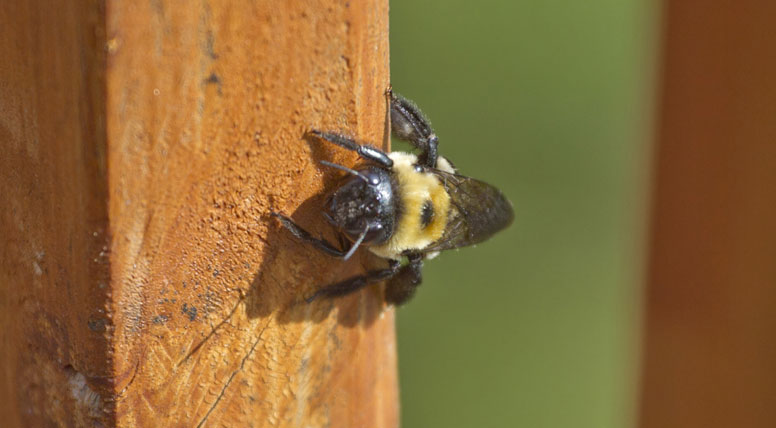
Eastern Carpenter Bee
(Xylocopa virginica)
Eastern carpenter bees are large bees measuring around ¾-inch with black and yellow bodies that look like bumble bees. The way to tell the difference is by looking at the bee’s abdomen. While bumble bees are fuzzy all over the carpenter bee abdomen is smooth. These bees live primarily in wooded areas and feed on pollen and nectar. Eastern carpenter bees are not aggressive unless they are provoked. The male, who cannot sting, will swoop as a defensive move. The female will sting and is able to sting multiple times.

Pure Green-Sweat Bee
(Augochlora pura)
The pure green-sweat bee is easy to identify due to its iridescent metallic green body. They are tiny, measuring only .3” on average. Their name is derived from this distinct appearance and their attraction to salt, often landing on humans to lick their sweat for the salt. These bees are solitary, living in rotting logs in wooded areas. The females will sting if they perceive a threat.
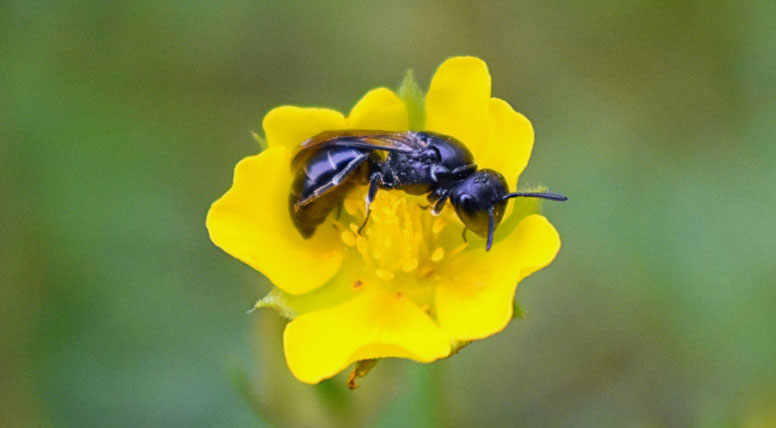
Mason Bee
((Osmia)
Mason bees have shiny metallic blue or green bodies with patches of fuzz. They have large wings and hairs on their hind legs. Their name comes from their use of masonry materials, like mud, to build their nests. Mason bees are solitary but they will choose to nest near other mason bees. The adult mason bee will grow to about ½ inch. Female mason bees will sting if provoked. They are prolific pollinators of spring fruits and flowers.

Plasterer Bee (Unequal Cellophane Bee)
(Colletes inaequalis)
The plasterer bee is also known as the unequal cellophane bee and the ground bee. Their name comes from the method they use to build their nests. They burrow underground, using their forked tongue to line the nest with a secretion resembling plastic or polyester that will keep the walls of the nest dry. Plasterer bees have black abdomens with tan stripes, growing to about ½ inch. They are solitary bees but will nest near other plasterer bees, with groupings sometimes nearing thousands of bees. These bees are pollinators, particularly of pussy willows, red maple trees and various spring flowers. Plasterer bees are not aggressive and will not swarm.
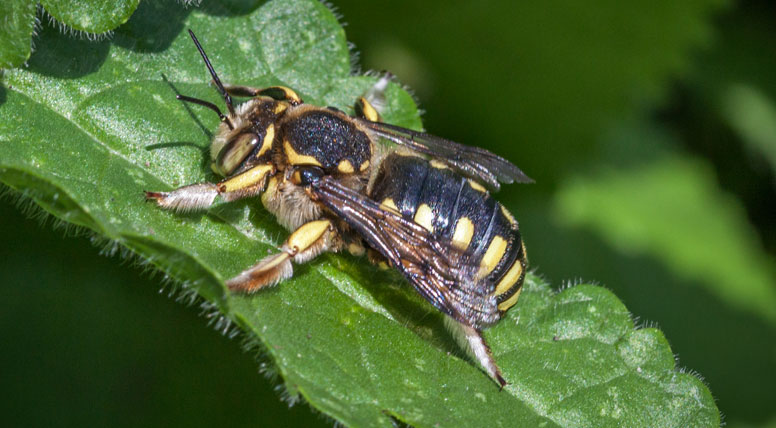
Leafcutter Bee
(Megachile)
Leafcutter bees are a family of bees who earn their name from the way they create their nests. They are solitary bees who chew leaves to build nests within rotting logs or old trees. They have slender bodies with black and pale yellow stripes. They carry pollen on the short hairs on the underside of their abdomen instead of using their hind legs. These bees are small, growing to just under ½ inch. Leafcutter bees will sting but only when they perceive a threat.

Squash Bee
(Peponapis pruinosa)
The squash bee, as their name hints, is a primary pollinator of squash, pumpkins and gourds. They also have a “squashed” appearance to their black and yellow bodies. They grow to about ½ inch and have a smooth abdomen and fuzzy thorax. They do not have stingers and so do not sting. They are solitary bees and the females build their nests in the ground. Squash bees are often more active when it is dark.

Hairy-footed Flower Bee
(Anthophora plumipes)
The hairy-footed flower bee is often confused for a bumble bee given their similarity in appearance. The hairy-footed flower bee is distinguished from the bumble bee by its fast, darting flying patterns and the difference in appearance between males and females. Both are dark brown to black with tan stripes across the abdomen but males have reddish brown or gray hair and females are entirely black or dark brown. They will grow to about ½ inch. Hairy-footed flower bees are solitary, building nests in spaces with clay and mud. The females will sting but only when provoked.
Signs of an Infestation
If you think you have a bee infestation it’s probably because of a nearby hive or the bees are seeking a warm space to nest.
Here are the signs to look for:
- Large numbers of bees outside, close to your home. This could mean there is a hive nearby or with your home.
- Holes bored into the wooden portions of your home (especially the eaves). The work of carpenter bees.
- Dark stains and slight bulging of walls, ceilings or floors. This is the result of honey seeping through.
- Buzzing sounds within your walls
It is always best to be safe. Contact a pest control professional to evaluate the situation.
Health and Damage Considerations
Bees in or too close to your home can cause structural damage and threaten your personal safety:
- Damage to wallboard and insulation
- Compromised wood
- Wax and honey stains
- Multiple stings can be dangerous
- Stings can be deadly to people allergic to bee venom
Behavior
Bees can be considered social or solitary. Social bees will live in large, highly-organized colonies with a queen, drones (males) and workers (females). Solitary bees will create nests with many choosing to nest near each other.
Many species of bees sting but most of them will only do so when they perceive they are provoked. They are docile creatures who do not seek out to attack humans.
Habitat
Bees live in a variety of places, depending on the species. Most bees make use of crevices or holes to create their hives and nests. Others will nest in the ground.
Honey bees will search for spaces with large cavities, like hollow tree trunks, chimneys and bee hives. Bumble bees will often use pre-existing spaces, like abandoned rodent holes.
Solitary bee nests are created by the female, who burrows underground or within other pre-existing tunnels abandoned by other insects.
Lifecycle
The bee lifecycle consists of four stages: eggs, larva, pupa and adult. The specifics of the process varies depending on the species.
Nearly all bee species lay their eggs in areas that are protected. Social bees will look after their eggs. Solitary bees will not.
The lifespan of bees is also specific to the species. In social species with queen bees, the queen will live 1-2 years. Whether social or solitary, bees live anywhere from one month to one year.
Feeding
Bees feed on the pollen and nectar produced by flowering plants and trees. As they move between plants to feed, they pollinate the flowers. Honey bees take this pollen and nectar back to their colonies to produce honey. The honey is a food source for those honey bees that never leave the colony.
